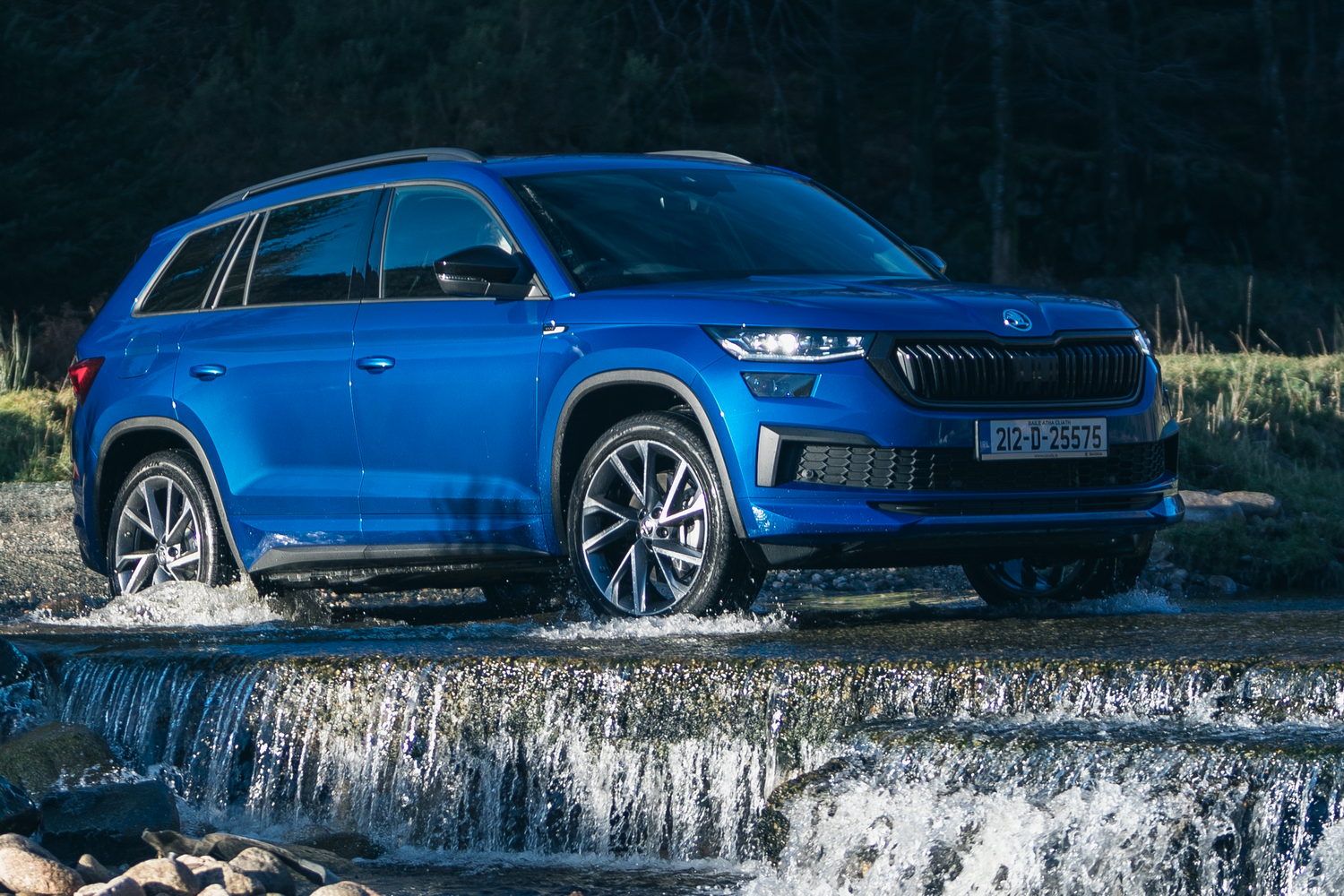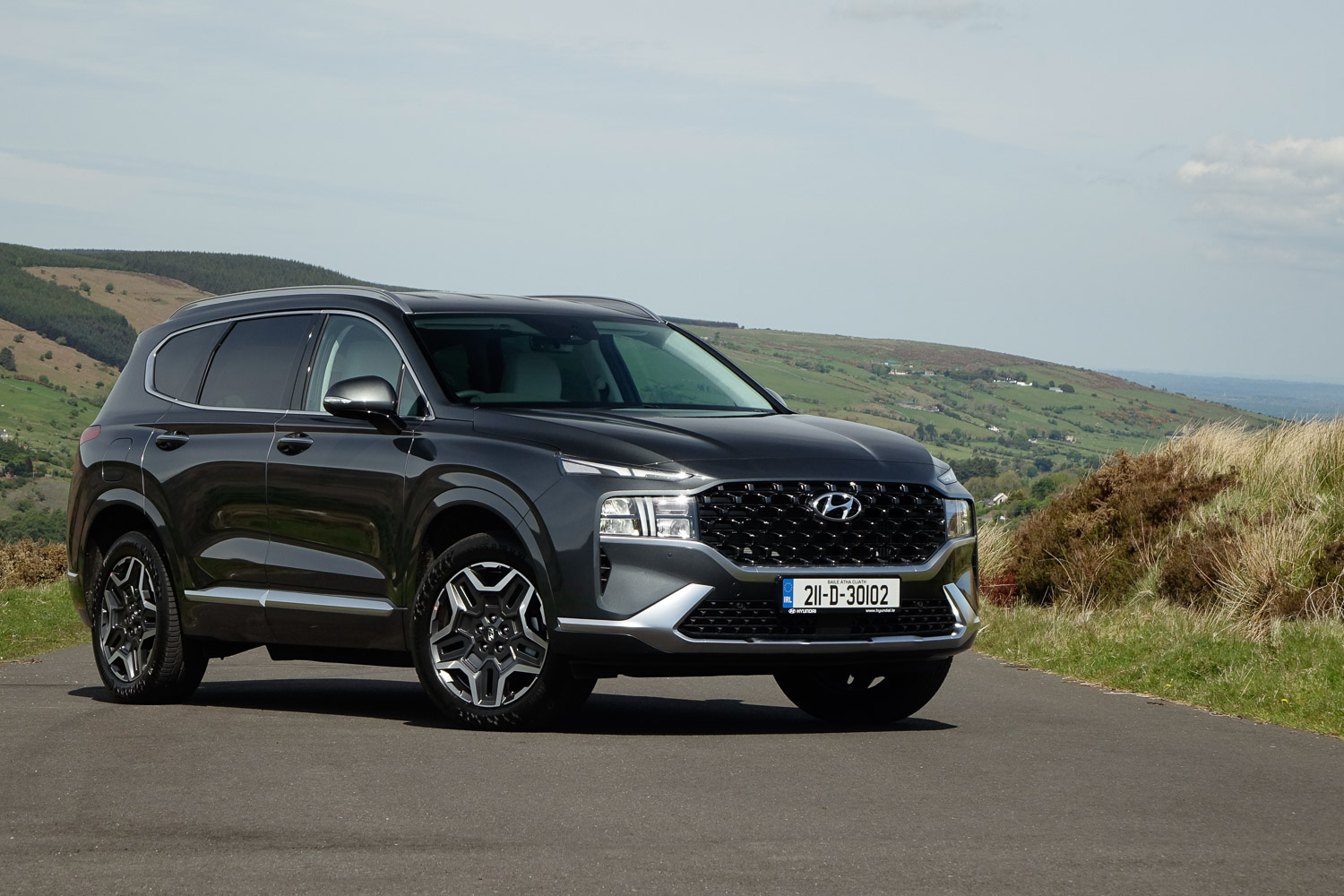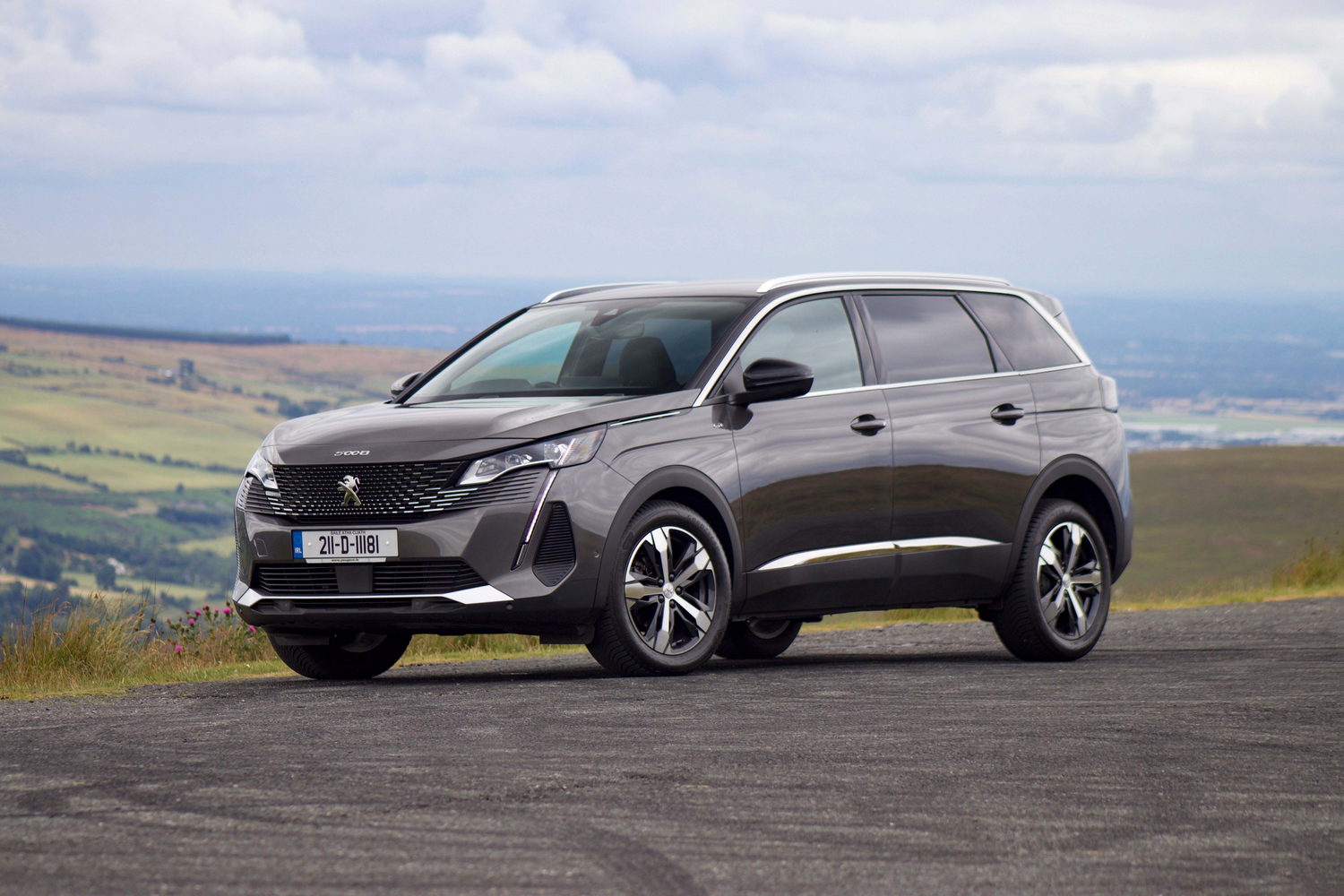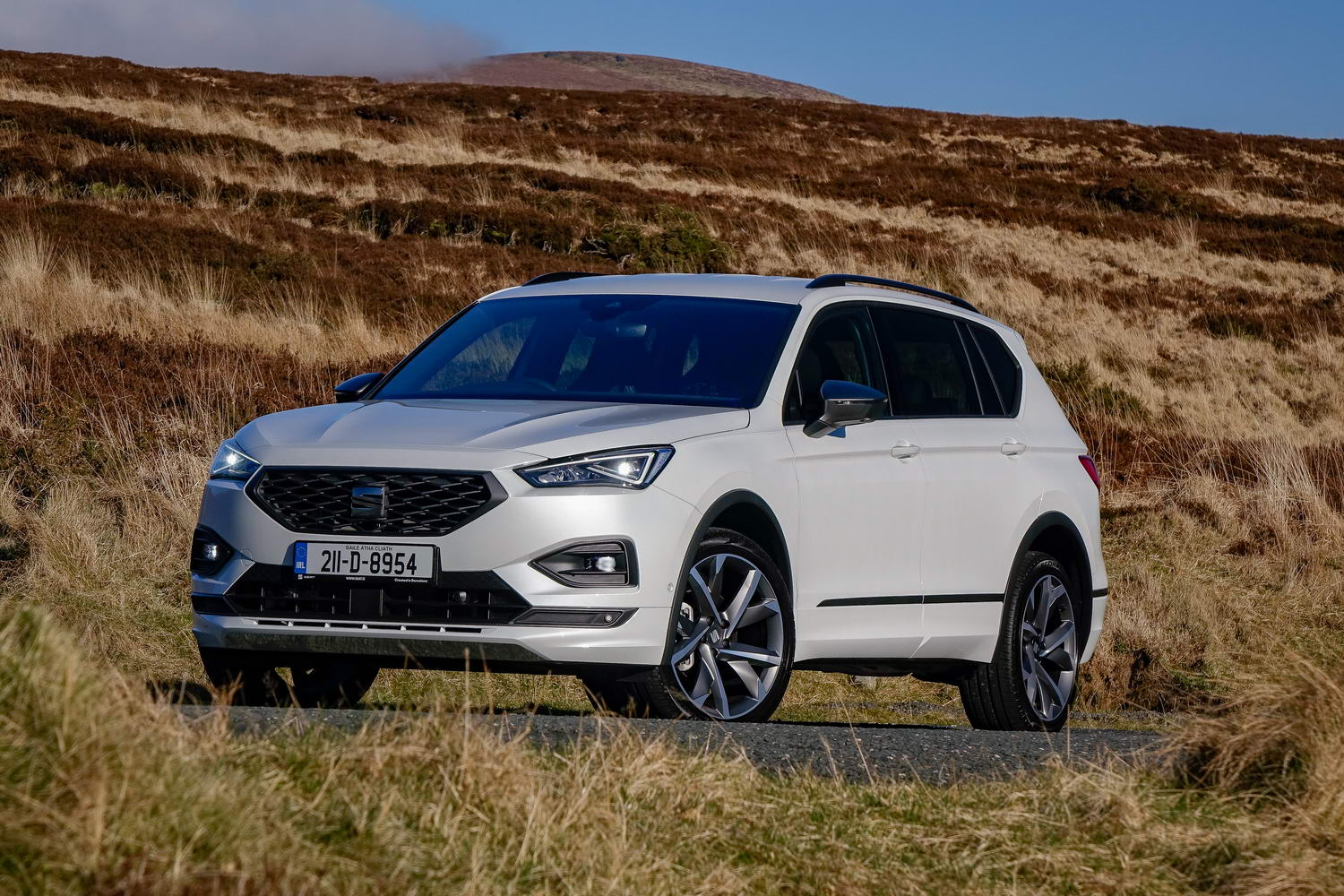Skoda Kodiaq overview
It's update time for the biggest car Skoda currently makes, the seven-seat Kodiaq SUV. The bluff-fronted 4x4 has long been a favourite amongst the cognoskodati (yes, I made that word up, let's move on...) but can it still compete with electric and electrified rivals when it currently doesn't even have a plug-in hybrid version in the range?
Skoda's updates include revised styling and equipment such as a bigger grille and headlights that scowl a little more at the front, plus a revised bonnet and bumpers; optional Matrix LED headlights; alloy wheels up to 20 inches in diameter; revised aerodynamics; a petrol-only RS model; optional 'Ergonomic' seats; some 'vegan' cabin materials; a high-end and optional Canton sound system; and optional digital instruments. But is all that enough?
The Skoda Kodiaq model range
The Kodiaq line-up starts with the 1.5-litre TSI turbocharged petrol engine, in Active trim, for a price of €41,685. This base model is the only one available in Active trim, which comes as standard with front, side, curtain and knee airbags; autonomous emergency braking; dual-zone air conditioning; cruise control; keyless ignition; a 6.5-inch touchscreen; 17-inch alloy wheels; and LED headlights. This model also comes with a six-speed manual gearbox and seven seats as standard. Don't dismiss it as a poverty model - after all, Skoda is still (just about) supposed to be a value brand, and the 1.5-litre engine is a better all-round performer than you might expect.
Next up is Ambition trim, which will cost you €43,665 for the 1.5 petrol; €48,260 for the same engine with a seven-speed DSG automatic gearbox; €45,350 for the 150hp 2.0 TDI diesel automatic; and €52,455 for the same engine with four-wheel drive.
Standard equipment, above what you get in the Active model, includes 18-inch alloys, 'dynamic' indicators with scrolling lights; three-zone climate control; radar cruise control; a rear-view camera; tinted privacy glass; automatic lights and wipers; auto-dimming rear-view mirror; eight-inch touchscreen; voice control, a rear centre armrest; and more exterior chrome.
Above Ambition is Style, which ditches the basic manual 1.5 model, and instead starts with an automatic 1.5 petrol priced from €52,605; the 2.0-litre 150hp TDI diesel auto for €50,760; that engine with four-wheel drive for €57,125; or a range-topping 200hp 2.0 TDI diesel auto 4x4 for €61,650.
Style models come with 19-inch alloys; Matrix LED headlights with adaptive beam; leather upholstery and upgraded front seats (they're heated, too); keyless entry; wireless phone charger; 9.2-inch touchscreen with integrated navigation and gesture control; and LED interior lighting.
At the top of the range lies Sportline, which will set you back €55,605 for the 1.5 petrol auto; €53,835 for the 2.0-litre TDI 150hp auto (that's the model we're testing here); €59,900 for the 2.0 TDI 150 with four-wheel drive; and €64,655 for the 200hp 2.0 TDI 4x4 auto.
Sportline models include 19-inch alloys in a dark finish, with a matching black finish for all the exterior trim and grille; a sports body kit; heated steering wheel with paddle shifters; electric driver seat adjustment; black suede upholstery along with front sports seats; carbon-fibre (fake, but convincing) cabin trim; selectable driving modes; and ambient interior lighting.
CO2 emissions for the Kodiaq range from 143g/km for the most basic 2.0 TDI 150hp diesel, to between 151- and 167g/km for the 1.5 petrol (depending on whether you have the automatic DSG gearbox or not) to a high of 177g/km for the 200hp 2.0 TDI diesel.
Skoda currently has an offer of a 3.9 per cent APR PCP finance package for the Kodiaq, with monthly repayments starting from €439 per month, but check out the Skoda Ireland website for the most up-to-date finance packages.
The Skoda Kodiaq interior
If ever a car were defined by its interior, it's the Kodiaq. For all the updates, it feels familiar inside, with that big cliff-faced dash that you'd hardly describe as stylish, but which you'd most definitely describe as reassuring. As soon as you get in, the only word that will be running through your mind will be 'quality'. It's not actually possible for a vehicular interior to smell of heft, but this one almost does.
The high-backed sports seats, with their diamond-quilted suede backrests and cushions, are standard on the Sportline model and they're spectacularly comfortable and supportive.
Ease yourself in, and you're confronted with neat digital dials that have just about enough customisation to justify themselves. The big 9.2-inch touchscreen uses an older version of Skoda's infotainment software, not the newest setup as used by the electric Enyaq SUV, and it's much the better - the menus are simpler to find your way around, even if some functions, such as dimming the screens at night, are buried too deep in some lists. However, we applaud the retention of both physical volume and tuning knobs, and physical switches for the heating and ventilation system. Honestly, car makers: stop putting this stuff on screens.
Below the heating controls is a deep storage area with a nicely-damped lid that houses the wireless phone charger, a 12-volt socket, and a pair of USB-C sockets. There are further USB sockets for back-seat passengers too. Behind that storage area is the chunky selector for the seven-speed DSG automatic gearbox, and behind that is a pair of cupholders, complete with knobbly bottoms to help you open a bottle of drink one-handed. Those cupholders are actually part of a removable plastic tray, which extends backwards under the front armrest. You can choose to have the cupholders up front, or turn things around to have a flat storage area instead.
There's a reasonably-sized glovebox in front of the front-seat passenger's knees and a second, upper-level storage area that sits behind a vast slab of material (imitation carbon-fibre in our test car). The door bins are massive and lined with felt, which helps to reduce rattles.
In the back, there's simply masses of space. Unless you regularly ferry around your local basketball team, you're unlikely to hear complaints about headroom nor legroom in the middle row. The cabin is wide, but sadly, Skoda doesn't fit three individual rear seats, so getting three child car seats in the back might be a squeeze. There are two ISOFIX points in the middle row, though and a third one (optionally for the basic model) in the front passenger seat. One thing to note - because the Kodiaq doesn't have a pointless wedge-shaped window line, rear seat passengers get a terrific view out.
The third row is a little less successful. The split-fold middle row also slides back and forth, so you can juggle the available legroom between the middle and third rows. That's good, but even so legroom and feet room in the way-back seats are compromised, and it's not roomy enough for adults. In fact, even older children might start to complain if they're stashed back there for too long. Headroom is fine though, and the tilting mechanism for the middle row means that getting in and out of the back isn't too much of an impromptu gymnastics event.
Boot space is excellent. Fold down the third row (easily done, and you should be able to manage it one-handed most of the time) and you've got a massive 765 litres of space to play with. Fold down all the seats, and you get 2,065 litres, which is practically a small van. With all seats in use, it shrinks to 270 litres, but that's enough for a decent-sized shopping trip, or a few squashy bags.
The Skoda Kodiaq Sportline driving experience
The Kodiaq's 2.0-litre TDI diesel engine, with its 150hp and 360Nm of torque (20Nm more than the older version of this engine) is a familiar thing, and in this application it's entirely adequate. That may sound like damning with faint praise, but I don't mean it entirely like that. With 1,740kg to haul around, it's not overwhelmed, but then neither does it quite live up to this model's Sportline billing. The 0-100km/h time of 9.8 seconds is fine for something as big as this, but again you're never going to think that the Kodiaq is especially sporty.
It does deliver decent fuel economy though - Skoda says that it'll do 5.6 litres per 100km and, in mixed driving that included long motorway hauls and plenty of urban stop-start, the Kodiaq returned 6.5 litres per 100km in our hands. Again, that's not spectacular but it is adequate. The seven-speed DSG dual-clutch automatic gearbox shifts smoothly, and it seems to have shaken off some of (if not quite all of) the low-speed lethargy that afflicted this engine-and-gearbox combo in the wake of the Dieselgate scandal. If you want performance that really justifies the Sportline badge, the styling and that arresting bright blue paint job, then upgrade to the meatier 200hp version of this engine.
Our car came with optional 20-inch 'Vega' alloy wheels, which look great, and which thankfully don't cripple the ride quality. The Kodiaq has very sensible suspension rates, which are firm enough to keep the body from toppling over in corners, but which won't assault your spine when the going gets rough. Combined with the high-backed bucket seats, this is an extremely comfortable car.
However, without the four-wheel drive of more expensive models it's easy to get caught out. We briefly pulled onto very lightly damp grass at one point, and very nearly didn't make it back to dry tarmac again... The combo of big wheels, low profile tyres, front-wheel drive and lots of torque meant that we dug a bit of a trench before returning to the road.
Through corners, the Kodiaq does feel really quite positive. The steering has good weight, and the front-end bites relatively keenly. There's enough of a frisson of the genuinely sporty RS model about it to make the Kodiaq a surprisingly enjoyable companion, if one limited by weight and bulk, on a twisty road.
Our verdict on the Skoda Kodiaq
The elephant in the room here is the diesel engine, and the lack of electric or electrified options. The Kodiaq has always been one of the most impressive large family SUVs and that hasn't changed - it's beautifully built, impressively comfortable, pleasant to drive and looks especially handsome in Sportline form. That said, it has also become quite expensive, so shop carefully for the version you want. Equally, if you don't really, really need the extra seats in the boot, then consider getting the all-electric Enyaq SUV, which is a hugely enticing car.
What do the rest of the team think?
The core Skoda Kodiaq formula is a winning one that countless families have fallen for. None of that has changed, and the updates that make up the latest facelift enhance its allure. As Neil mentioned, however, the Kodiaq isn't really keeping up with the times and badly needs a hybrid powertrain option. Nonetheless, while there's less and less justification for going for a diesel model (unless perhaps you regularly tow heavy loads or you traverse the country via the motorway on a daily basis), the petrol-powered Kodiaq shouldn't be dismissed. Regardless of what's under the bonnet, this is a hugely useful car.
Shane O' Donoghue - Editor


































